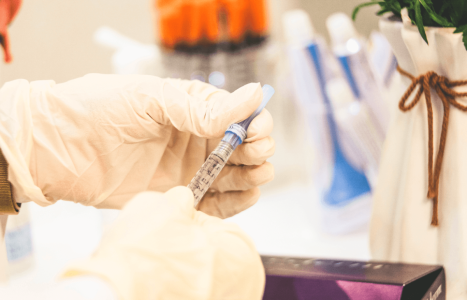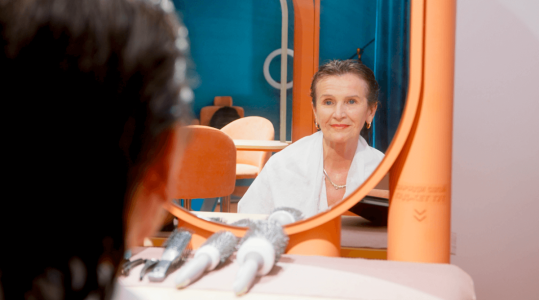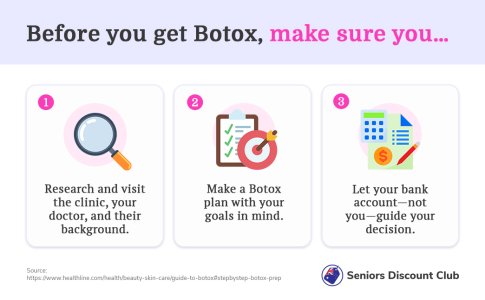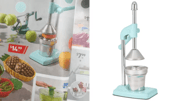The hidden dangers of Botox immunity: What every patient needs to be aware of!
- Replies 9
There's no denying that we all want to look and feel our best as we age. One way that many people try to maintain their youthful appearance is through cosmetic treatments, such as Botox injections.
However, a recent report reveals that there may be a potential danger to these seemingly harmless procedures: Botox immunity. This news may be especially concerning, considering the popularity of Botox among individuals looking for a little aesthetic boost.
For starters, we'd like to clarify that Botox is a brand name for the injectable muscle relaxant that contains the active ingredient Botulinum Toxin Type A.
This neurotoxic protein is often used for cosmetic purposes to reduce the appearance of wrinkles and fine lines, as well as for various therapeutic treatments, such as addressing muscle spasms, overactive bladders, and even migraine headaches.

Clinicians have warned that some people who undergo Botox treatments may eventually become immune to the effects of the active ingredient. This immunity could cause the treatments to become less effective over time, forcing patients to spend more money on more frequent injections that, in the long run, might not deliver the desired results.
Take the case of Isobel Fabray, a 27-year-old woman who began receiving Botox injections in her forehead when she was just 23. After around ten sessions, she noticed that the treatment's effects were becoming less and less noticeable, requiring her to get it topped up more frequently than expected.
Apart from the financial concerns posed by the reduced efficacy of Botox injections, there's a far more significant issue at stake. Experts suggest that the development of immunity to the botanical toxin can cause distressing health problems in the future.
A person with Botulinum Toxin immunity who later experiences a stroke or other medical conditions that could potentially benefit from Botox as a therapy may find that it no longer works for them.
Dr Mary Dingley, a long-time cosmetic physician, expressed her concerns about the issue: 'Later on in life, if they have a stroke, and they had a spastic muscle, or they developed some kind of medical condition which needed the Botulinum Toxin as the therapy, then it's not going to work.'
'That could be a big disaster… For some of these conditions, Botulinum Toxin is the only therapy; there is no alternative.'
While there is no official data on the rate of Botulinum Toxin immunity among Australians, a 2018 study found that 13 per cent of 596 patients developed antibodies to the active ingredient.
So, what can people do to avoid this potentially detrimental situation? Dr Dingley advises that clinicians should inform their patients about alternatives to Botox injections. She says, 'It's ethically the right thing to do, to use the treatment which is less likely to stimulate the immune system.'

Alternatives to Botox for wrinkle reduction and other therapeutic treatments
As we mentioned earlier, Botox might not be the best option for everyone, especially those who are at risk of developing immunity to the botanical toxin. Fortunately, several alternatives to Botox can still provide satisfying results in reducing wrinkles and addressing various health conditions. Here are some options:
- Dermal Fillers
Unlike Botox, which relaxes muscles to smooth out wrinkles, dermal fillers work by adding volume to the skin. They are often used to plump up areas of the face that have lost volume due to ageing, such as cheeks and lips.
While results can be impressive, it's essential to note that fillers are temporary solutions and will require regular touch-ups to maintain the desired effect.
- Microneedling
This minimally invasive procedure involves using tiny needles to stimulate the skin's natural healing process, promoting collagen and elastin production. The result is a smoother, firmer, and more rejuvenated appearance.
In addition to its cosmetic benefits, microneedling has been studied for its potential therapeutic uses, including the treatment of scars, pigmentation issues, and even hair loss.
- Radiofrequency (RF) Treatments
A popular non-surgical alternative, RF treatments use energy waves to heat the skin's deeper layers, prompting collagen production and tissue tightening. This can lead to a reduction in the appearance of wrinkles and sagging skin.
Common devices used for RF treatments include Thermage and Exilis, which may also help with therapeutic needs, such as pain relief and treatment of skin lesions.
- Acupuncture
While it might seem surprising, acupuncture has been gradually gaining popularity as an alternative approach to improving skin appearance and combating the signs of ageing. Cosmetic acupuncture focuses on facial points to stimulate blood flow and collagen production, reducing the appearance of wrinkles and improving overall skin health.
This age-old technique has numerous therapeutic benefits, addressing conditions such as chronic pain, anxiety, and migraine headaches.

As always, it's crucial to consult with a trusted healthcare professional and weigh the pros and cons of each method before making a decision. Remember, the key to ageing gracefully lies in making informed choices and finding what works best for you. Cheers to embracing your age with confidence, dear members!
We would love to hear your thoughts on this story. Have you or anyone you know undergone any cosmetic procedures? Do you possess any knowledge about lesser-known side effects that could benefit others in making their decisions regarding these procedures?
Please share your experiences and insights in the comments section below!
However, a recent report reveals that there may be a potential danger to these seemingly harmless procedures: Botox immunity. This news may be especially concerning, considering the popularity of Botox among individuals looking for a little aesthetic boost.
For starters, we'd like to clarify that Botox is a brand name for the injectable muscle relaxant that contains the active ingredient Botulinum Toxin Type A.
This neurotoxic protein is often used for cosmetic purposes to reduce the appearance of wrinkles and fine lines, as well as for various therapeutic treatments, such as addressing muscle spasms, overactive bladders, and even migraine headaches.

Clinicians also warn patients about the potential dangers of becoming immune to Botox. Credit: Unsplash/sammoghadamkhamseh.
Clinicians have warned that some people who undergo Botox treatments may eventually become immune to the effects of the active ingredient. This immunity could cause the treatments to become less effective over time, forcing patients to spend more money on more frequent injections that, in the long run, might not deliver the desired results.
Take the case of Isobel Fabray, a 27-year-old woman who began receiving Botox injections in her forehead when she was just 23. After around ten sessions, she noticed that the treatment's effects were becoming less and less noticeable, requiring her to get it topped up more frequently than expected.
Apart from the financial concerns posed by the reduced efficacy of Botox injections, there's a far more significant issue at stake. Experts suggest that the development of immunity to the botanical toxin can cause distressing health problems in the future.
A person with Botulinum Toxin immunity who later experiences a stroke or other medical conditions that could potentially benefit from Botox as a therapy may find that it no longer works for them.
Dr Mary Dingley, a long-time cosmetic physician, expressed her concerns about the issue: 'Later on in life, if they have a stroke, and they had a spastic muscle, or they developed some kind of medical condition which needed the Botulinum Toxin as the therapy, then it's not going to work.'
'That could be a big disaster… For some of these conditions, Botulinum Toxin is the only therapy; there is no alternative.'
While there is no official data on the rate of Botulinum Toxin immunity among Australians, a 2018 study found that 13 per cent of 596 patients developed antibodies to the active ingredient.
So, what can people do to avoid this potentially detrimental situation? Dr Dingley advises that clinicians should inform their patients about alternatives to Botox injections. She says, 'It's ethically the right thing to do, to use the treatment which is less likely to stimulate the immune system.'
Key Takeaways
- Clinicians are warning people who get cosmetic injectables that they may become immune to the active ingredient used in Botox, which can have 'disastrous' impacts in the future if they need to treat a serious health condition.
- Isobel Fabray experienced issues with her Botox injections dissolving faster than they should, leading her to discover she had developed an immunity to the product.
- Dr Vivek Eranki explains that some people develop antibodies to the inactive ingredient in Botox, causing the body to attack the agent and tolerance to form.
- Dr Mary Dingley emphasises the importance of clinicians being aware of potential immunity and offering alternative products to patients to avoid serious health complications later in life.
Alternatives to Botox for wrinkle reduction and other therapeutic treatments
As we mentioned earlier, Botox might not be the best option for everyone, especially those who are at risk of developing immunity to the botanical toxin. Fortunately, several alternatives to Botox can still provide satisfying results in reducing wrinkles and addressing various health conditions. Here are some options:
- Dermal Fillers
Unlike Botox, which relaxes muscles to smooth out wrinkles, dermal fillers work by adding volume to the skin. They are often used to plump up areas of the face that have lost volume due to ageing, such as cheeks and lips.
While results can be impressive, it's essential to note that fillers are temporary solutions and will require regular touch-ups to maintain the desired effect.
- Microneedling
This minimally invasive procedure involves using tiny needles to stimulate the skin's natural healing process, promoting collagen and elastin production. The result is a smoother, firmer, and more rejuvenated appearance.
In addition to its cosmetic benefits, microneedling has been studied for its potential therapeutic uses, including the treatment of scars, pigmentation issues, and even hair loss.
- Radiofrequency (RF) Treatments
A popular non-surgical alternative, RF treatments use energy waves to heat the skin's deeper layers, prompting collagen production and tissue tightening. This can lead to a reduction in the appearance of wrinkles and sagging skin.
Common devices used for RF treatments include Thermage and Exilis, which may also help with therapeutic needs, such as pain relief and treatment of skin lesions.
- Acupuncture
While it might seem surprising, acupuncture has been gradually gaining popularity as an alternative approach to improving skin appearance and combating the signs of ageing. Cosmetic acupuncture focuses on facial points to stimulate blood flow and collagen production, reducing the appearance of wrinkles and improving overall skin health.
This age-old technique has numerous therapeutic benefits, addressing conditions such as chronic pain, anxiety, and migraine headaches.

There are various alternatives to Botox that older adults can consider when seeking wrinkle reduction or other therapeutic treatments. Credit: Pexels/Artem Podrez.
As always, it's crucial to consult with a trusted healthcare professional and weigh the pros and cons of each method before making a decision. Remember, the key to ageing gracefully lies in making informed choices and finding what works best for you. Cheers to embracing your age with confidence, dear members!
We would love to hear your thoughts on this story. Have you or anyone you know undergone any cosmetic procedures? Do you possess any knowledge about lesser-known side effects that could benefit others in making their decisions regarding these procedures?
Please share your experiences and insights in the comments section below!








